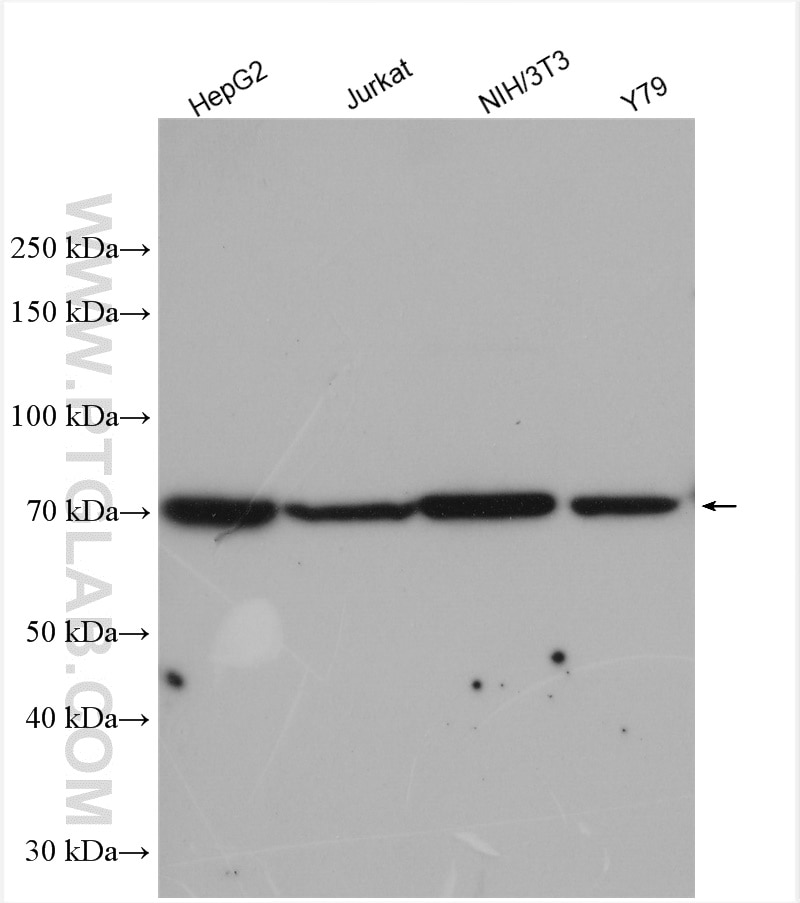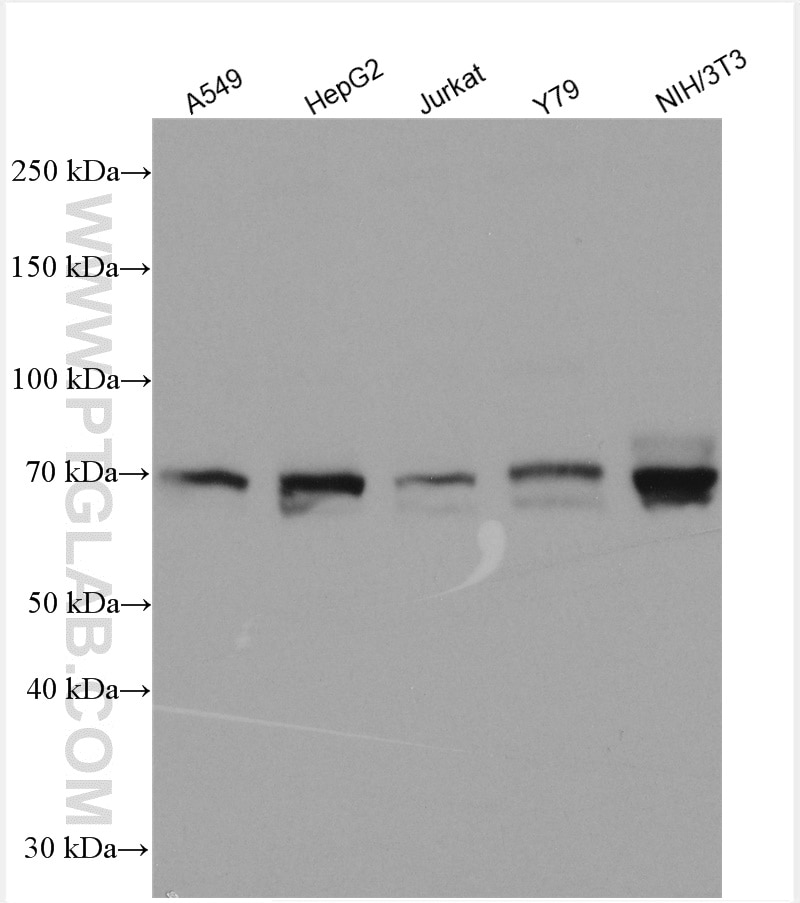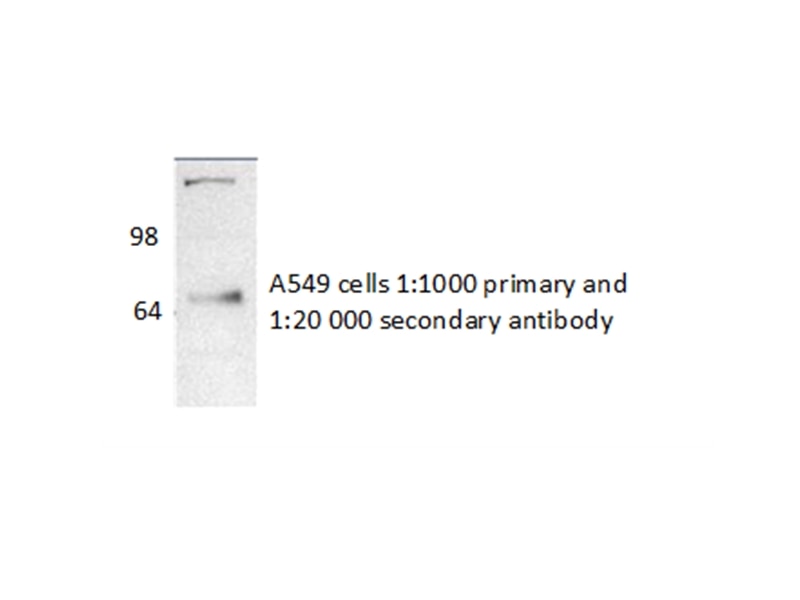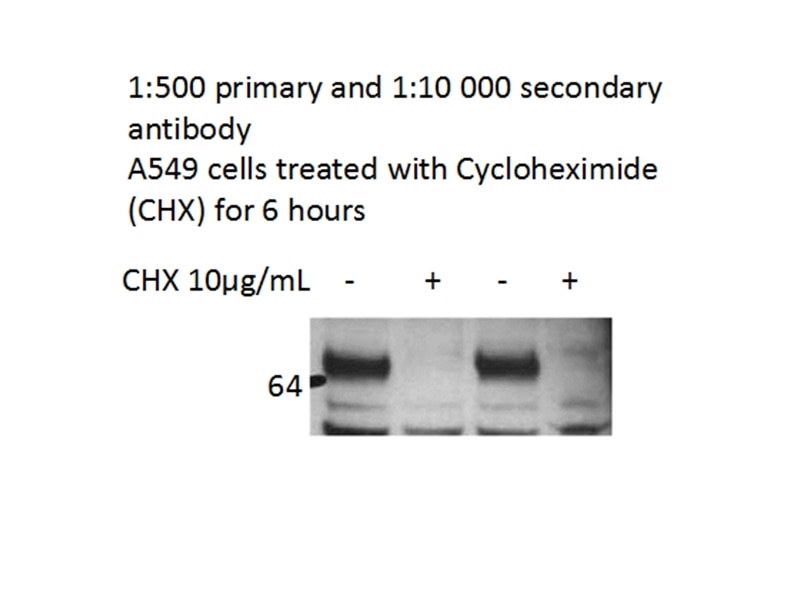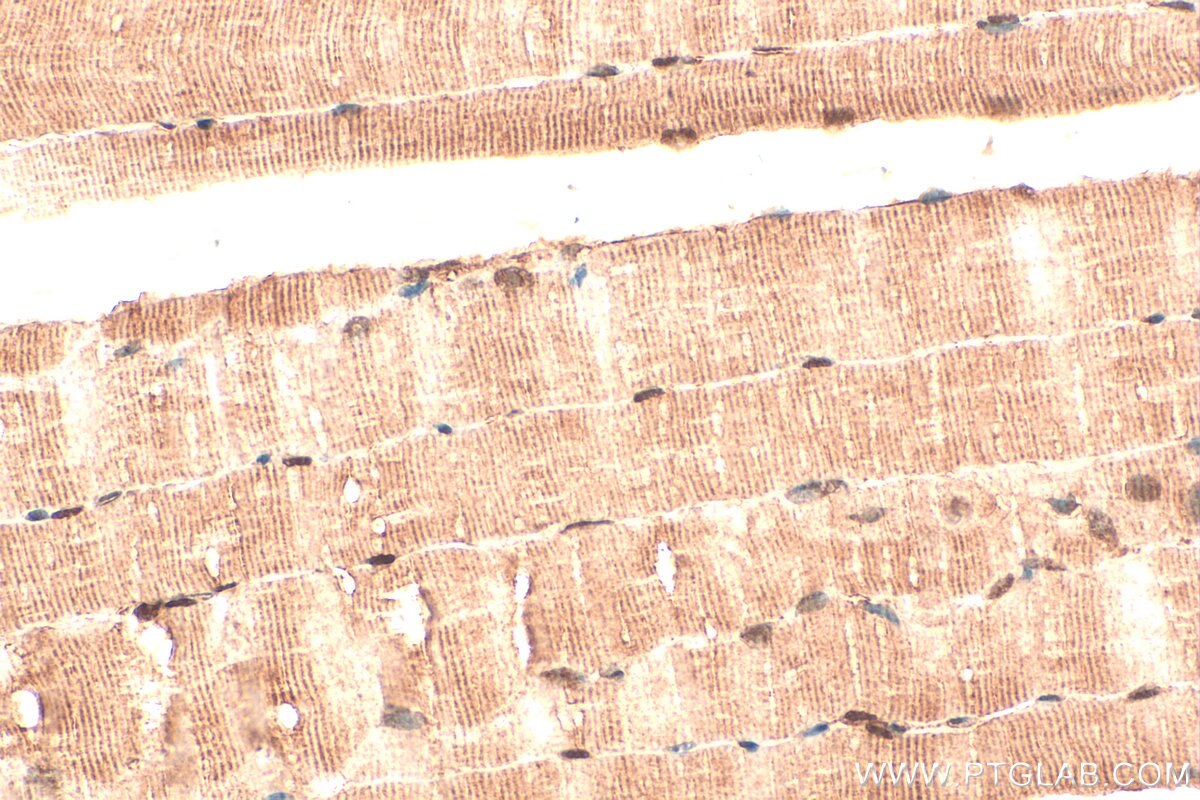- Phare
- Validé par KD/KO
Anticorps Polyclonal de lapin anti-NR1D1
NR1D1 Polyclonal Antibody for WB, IHC, IF/ICC, ELISA
Hôte / Isotype
Lapin / IgG
Réactivité testée
Humain, souris et plus (1)
Applications
WB, IHC, IF/ICC, IP, ChIP, ELISA
Conjugaison
Non conjugué
N° de cat : 14506-1-AP
Synonymes
Galerie de données de validation
Applications testées
| Résultats positifs en WB | cellules A549, cellules HeLa, cellules HepG2, cellules Jurkat, cellules NIH/3T3, cellules Y79, tissu de muscle squelettique de souris |
| Résultats positifs en IHC | tissu de muscle squelettique de souris, il est suggéré de démasquer l'antigène avec un tampon de TE buffer pH 9.0; (*) À défaut, 'le démasquage de l'antigène peut être 'effectué avec un tampon citrate pH 6,0. |
| Résultats positifs en IF/ICC | cellules NIH/3T3 |
Dilution recommandée
| Application | Dilution |
|---|---|
| Western Blot (WB) | WB : 1:1000-1:4000 |
| Immunohistochimie (IHC) | IHC : 1:50-1:500 |
| Immunofluorescence (IF)/ICC | IF/ICC : 1:50-1:500 |
| It is recommended that this reagent should be titrated in each testing system to obtain optimal results. | |
| Sample-dependent, check data in validation data gallery | |
Applications publiées
| KD/KO | See 5 publications below |
| WB | See 29 publications below |
| IHC | See 3 publications below |
| IF | See 6 publications below |
| IP | See 1 publications below |
| ChIP | See 5 publications below |
Informations sur le produit
14506-1-AP cible NR1D1 dans les applications de WB, IHC, IF/ICC, IP, ChIP, ELISA et montre une réactivité avec des échantillons Humain, souris
| Réactivité | Humain, souris |
| Réactivité citée | rat, Humain, souris |
| Hôte / Isotype | Lapin / IgG |
| Clonalité | Polyclonal |
| Type | Anticorps |
| Immunogène | NR1D1 Protéine recombinante Ag5964 |
| Nom complet | nuclear receptor subfamily 1, group D, member 1 |
| Masse moléculaire calculée | 67 kDa |
| Poids moléculaire observé | 68 kDa |
| Numéro d’acquisition GenBank | BC056148 |
| Symbole du gène | NR1D1 |
| Identification du gène (NCBI) | 9572 |
| Conjugaison | Non conjugué |
| Forme | Liquide |
| Méthode de purification | Purification par affinité contre l'antigène |
| Tampon de stockage | PBS with 0.02% sodium azide and 50% glycerol |
| Conditions de stockage | Stocker à -20°C. Stable pendant un an après l'expédition. L'aliquotage n'est pas nécessaire pour le stockage à -20oC Les 20ul contiennent 0,1% de BSA. |
Informations générales
NR1D1, also named EAR1, THRAL, ear-1, and hRev, contains one nuclear receptor DNA-binding domain and belongs to the nuclear hormone receptor family. NR1 subfamily. This protein functions as a constitutive transcriptional repressor. It is a possible receptor for triiodothyronine. BMAL1-CLOCK activates Rev-erba itself and thereby represents the link between the positive and negative loops of the circadian clock. This is a rabbit polyclonal antibody raised against the N terminus of human NR1D1.
Protocole
| Product Specific Protocols | |
|---|---|
| WB protocol for NR1D1 antibody 14506-1-AP | Download protocol |
| IHC protocol for NR1D1 antibody 14506-1-AP | Download protocol |
| IF protocol for NR1D1 antibody 14506-1-AP | Download protocol |
| Standard Protocols | |
|---|---|
| Click here to view our Standard Protocols |
Publications
| Species | Application | Title |
|---|---|---|
Nat Commun The tight junction protein TJP1 regulates the feeding-modulated hepatic circadian clock. | ||
Theranostics PPAR-γ integrates obesity and adipocyte clock through epigenetic regulation of Bmal1. | ||
Cancer Res NR1D1 recruitment to sites of DNA damage inhibits repair and is associated with chemosensitivity of breast cancer. | ||
Int J Biol Macromol Dihydroartemisinin requires NR1D1 mediated Rab7 ubiquitination to regulate hepatic stellate cells lipophagy in liver fibrosis
| ||
Cell Death Discov NR1D1 deficiency in the tumor microenvironment promotes lung tumor development by activating the NLRP3 inflammasome | ||
J Neuroinflammation The circadian clock protein Rev-erbα provides neuroprotection and attenuates neuroinflammation against Parkinson's disease via the microglial NLRP3 inflammasome. |
Avis
The reviews below have been submitted by verified Proteintech customers who received an incentive for providing their feedback.
FH Priya (Verified Customer) (01-17-2023) | I have used for cardiomyocytes, mouse skin and liver tissues
|
FH Satish (Verified Customer) (12-19-2019) | I got clear bands. The antibody detects two band one band around 67 kDa and another band much lower than 67kDa.
|
